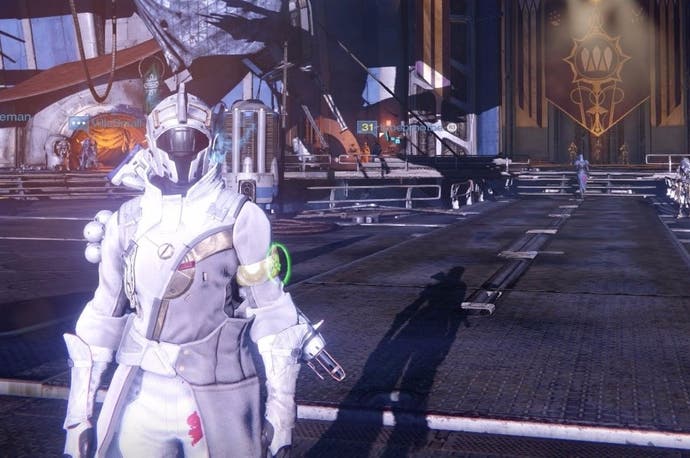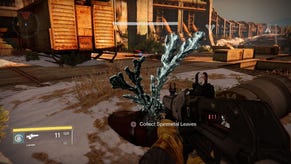Destiny: House of Wolves review
Expansion pack hunting.
Destiny's developer Bungie has recently got into the habit of referring to last September's release and the two subsequent expansions as falling under Year One, as if they're talking up an origins story of which this much maligned, much played massively online shooter is the subject. There's certainly a neat arc there: the somewhat downbeat beginnings, with Destiny initially slumping under the weight of expectation, before it limped towards a nadir with The Dark Below's slim, far from stimulating addition. All of which sets up The House of Wolves, the final expansion before - we fully expect - a more substantial overhaul that marks the beginning of Year Two, as the third act redemption, where all of Destiny's latent potential is untapped.
House of Wolves doesn't quite do that, of course, but it does deliver an overhaul of systems and a stream of modes and features that are the best thing to happen to Destiny since its launch. Fan grievances are addressed, the hamster wheel grind has been sprinkled with more regular treats and it's a delight to still be surprised, even after some 15 hours spent with the expansion, by new tweaks in some of Destiny's farther flung corners. What really makes House of Wolves fly, though, isn't to be found in the laundry list of what's been added. It's somewhere beyond that, and somewhere far more exciting. With this expansion, it feels like Bungie has remembered some of that magic that has made Bungie games so special in the past.
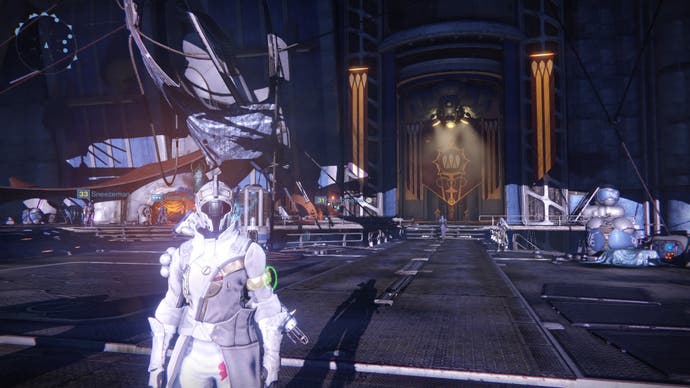
You'll sense that in the instant spectacle of the first of the new campaign missions. Within seconds you're sitting atop a purple Pike, a bloated speeder that hoarsely skims through a canyon as it spits out mines that bounce off the encroaching crevices, and then seconds after that you're face to face with a heavily armoured Walker that's spraying the air with plasma. It's a real statement of intent, and one the rest of the campaign - which can be polished off in around two to three hours, though your mileage will vary depending on what difficulty you engage with - sees through. House of Wolves leans heavily on the highlights of the shooter's first eight months, even stretching to one explicit late-game reference to the very best that Destiny has had to offer in its life to date. Many of the locations are lifted from elsewhere, though what's been lifted and how it's been used still has the capacity to surprise.
All that's carried through to the single new Strike that, while not as spectacular as some of its peers, has a flow and pacing that's lacking elsewhere. There's some grand stage direction, and even room for a jump scare, as it places you in the chase for Taniks, one of several rogue Fallens, who leads a merry dance through some fine scenery. Running through the bulbous corridors of the Ketch ship he's holed up in, it's hard not to be reminded of the purple pathways of the Covenant's own ships, and back to Halo's warm warrens. House of Wolves wraps up what's best about Destiny, and it folds in some of what's best about Bungie, too.
No clearer is that heritage felt than in the snap of the sidearms, the all-new weapon class that's introduced in House of Wolves. One's gifted to you on completing the first story mission, the Vestian Dynasty, a stubby pistol that looks like it's wrought from smooth alien iron. What a weapon it is too, whipping off rounds like a firecracker with its rate of fire through the roof, its arc damage smashing through headshot after headshot. Destiny's already had its fair share of iconic guns - the game-breaking sniper rifle Icebreaker, or Suros Regime with its jackhammer thud - but Vestian Dynasty calls for a place among Bungie's very best, alongside Combat Evolved's pistol or its successor in Halo 3: ODST.
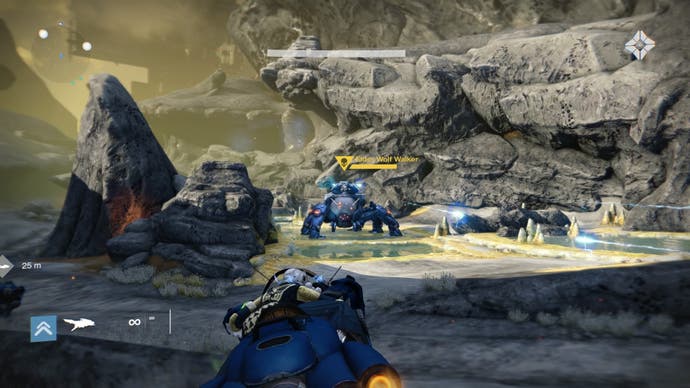
It's a gun with real character, and elsewhere in House of Wolves there's a stronger sense of personality emerging. The Reef, the new social space that's introduced, isn't quite as rich as The Tower that precedes it - a cavernous hangar surrounded by inky black space, it's limited in size and potential for tomfoolery - but it's host to characters with a little more colour. A new cryptarch, voiced by Gideon Emery, provides a counterpoint to the dour tone of The Tower's original, and there's even some pep in the delivery of quest giver Petra Tov that's a refreshing contrast to the tone of abject boredom struck previously in Destiny.
Such flourishes are welcome, even if they quickly fall to the backdrop as the established loop of progression in Destiny takes hold. House of Wolves doesn't fundamentally alter the grind, but it presents a game that's more generous with its spoils, and one that hurries you through to the level cap. Level 34 - the ceiling until any new expansion later this year - is attainable relatively easily, and unlike the somewhat limited progression of The Dark Below you can now hit it a number of ways, maxing out your existing gear and weapons by ascending them using some of the new materials. More importantly, it means that to hit the cap you're no longer tied to the bony, torn and angular gear dropped in the old raid Crota's End that made you look like a refugee from Camden High Street circa 1998.
Those materials are still hard to come by, dropping in the weekly Nightfall Strikes or, more commonly, as rewards in House of Wolves' two new activities, the PvE Prison of Elders and the PoE Trials of Osiris. Prison of Elders is a not-so-fresh spin on horde mode - or Firefight, as it was previously known in Bungie's Halo - wherein teams of three are pitted against rooms of enemies before the encounter climaxes with a boss fight. What's within the Prison of Elders is hardly a replacement for the raids that have previously seen Destiny at its very best, but it's a welcome new wrinkle in a game that's growing in breadth, and one that has been neatly executed: the encounters have the same ferocity of those seen in the raids, especially on higher levels where the better loot is kept. And that loot room, at last, sees the gear lust that fuels Destiny players brilliantly realised, three chests sitting atop a glittering ocean of gold.
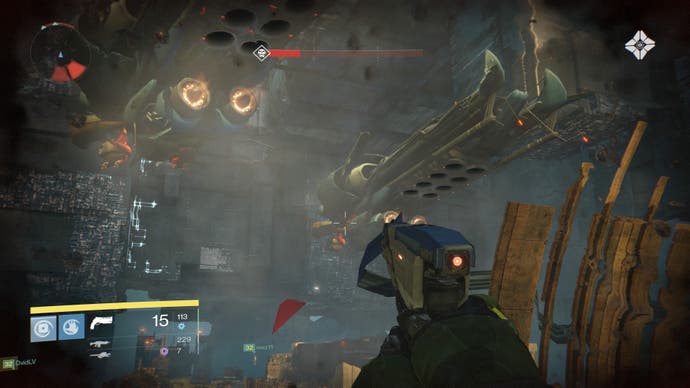
Trials of Osiris, meanwhile, is Destiny at its most hardcore, a multiplayer variant available only on the weekends which builds upon the existing Elimination mode and folds in a little of CounterStrike's more brutal approach. Teams of three face off against each other, with respawns disallowed - and with only a single map being playable over any weekend, there's an emphasis on teamwork and intimate knowledge of the map. It's punishing, breathless stuff.
And that's probably not even the most significant change House of Wolves brings to Destiny's multiplayer. There's a host of changes and amendments that'll be felt by anyone entering the Crucible, with payout doubled and with loot drops happening on a more regular basis. For what feels like the first time, multiplayer has become a place where you can make meaningful progression.
Like much of House of Wolves, it feels like part of a more harmonious relationship between Destiny and its players. So much of what has defined Destiny has come through that playful friction between the two - the loot cave, the deliberate disconnects to down Crota and all that glorious cheese - but now it feels like they're pulling together. This isn't a radical overhaul of Destiny, but it's a serious step in the right direction, and it's enough to suggest that the heroic comeback and more widespread adulation might not be too far off after all.
